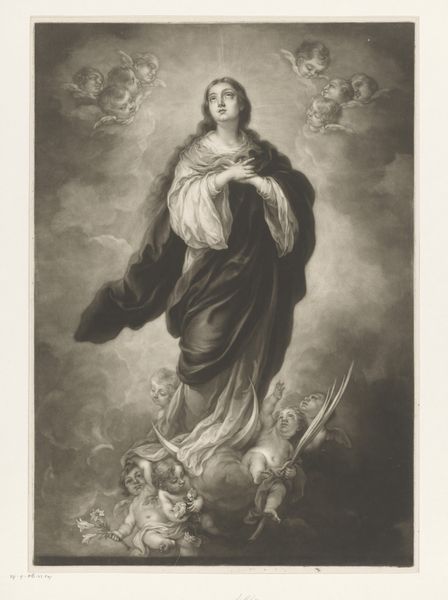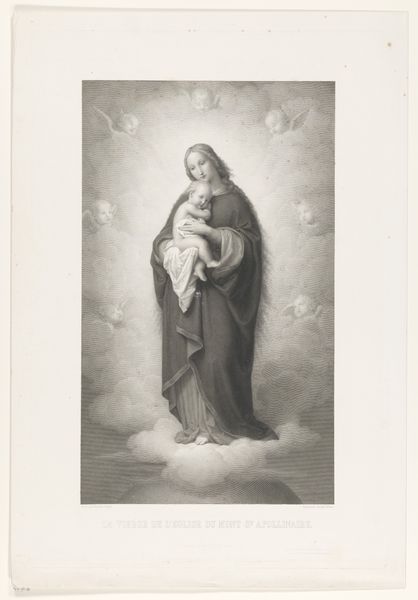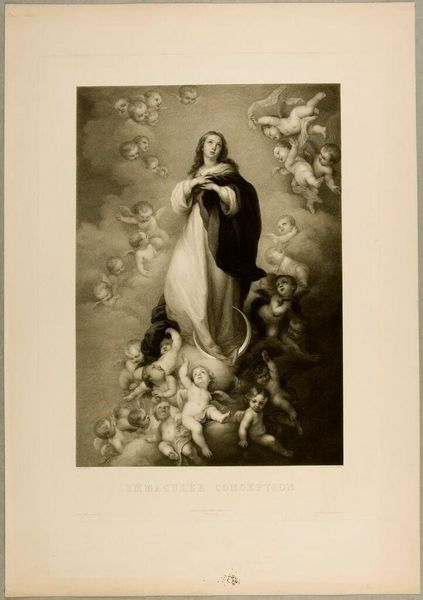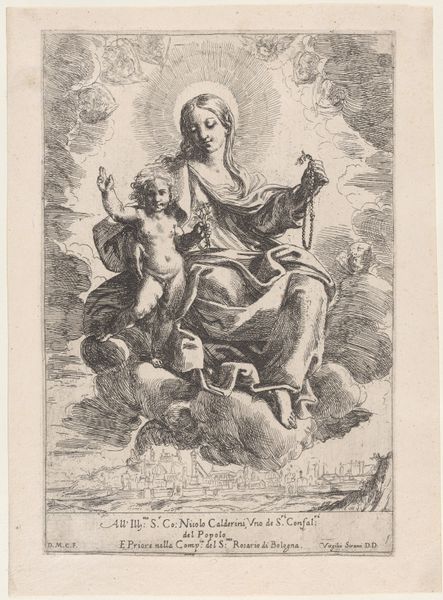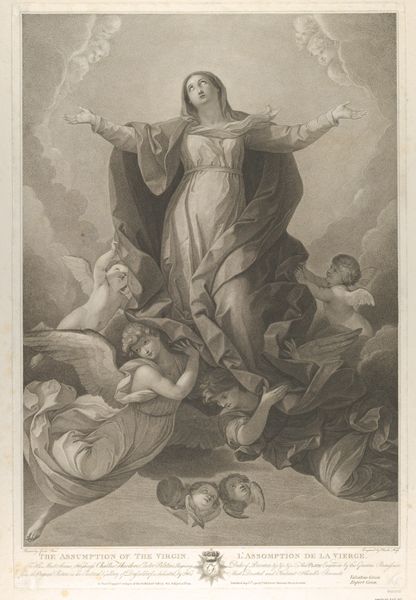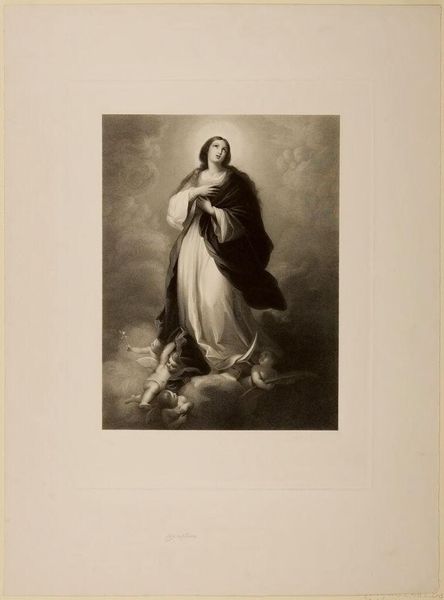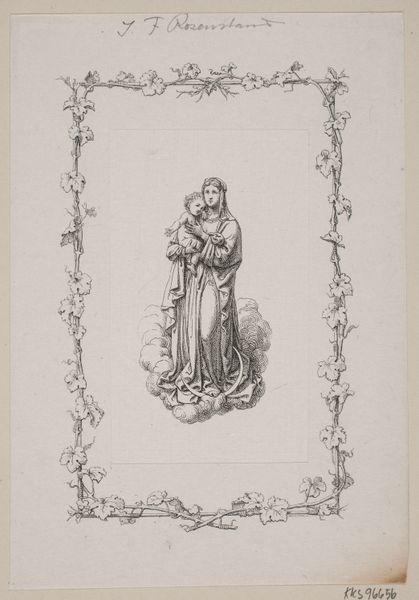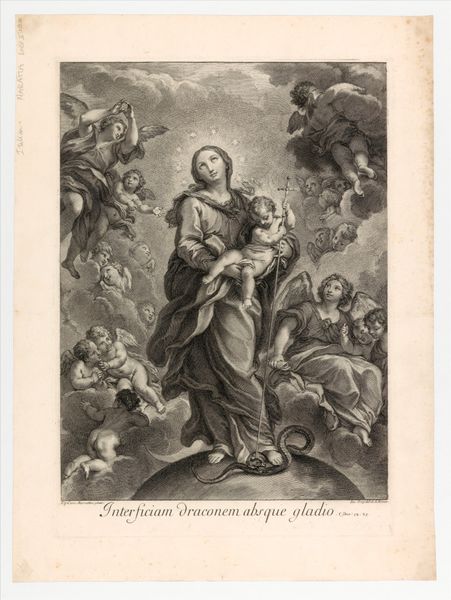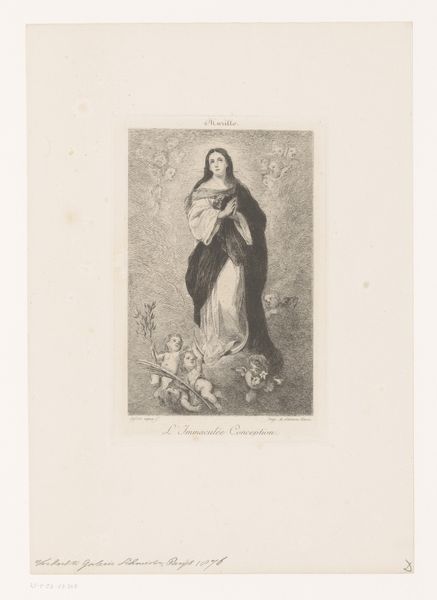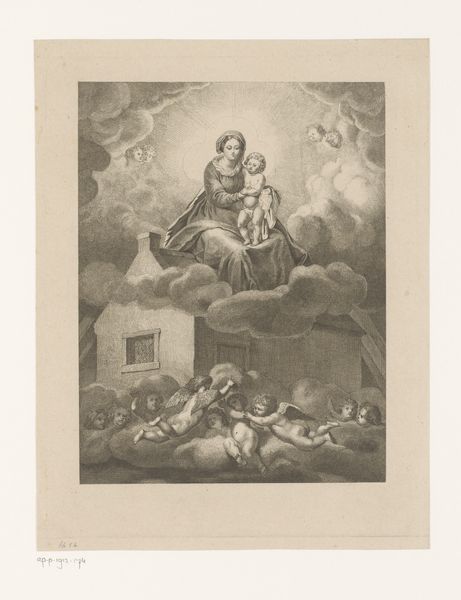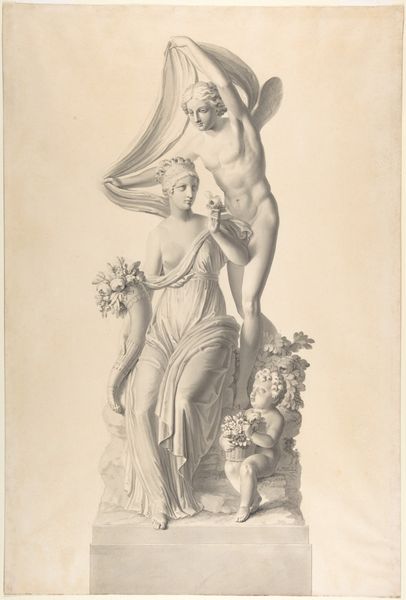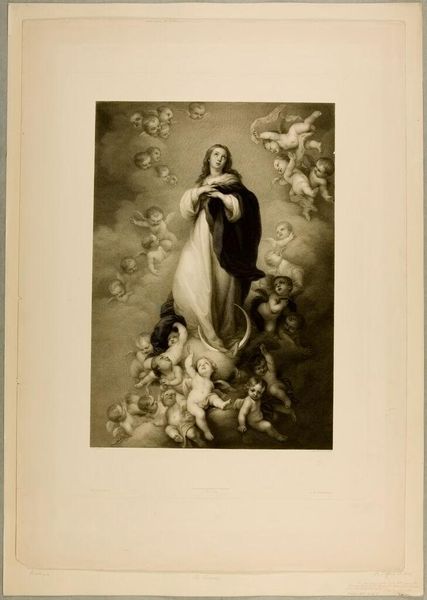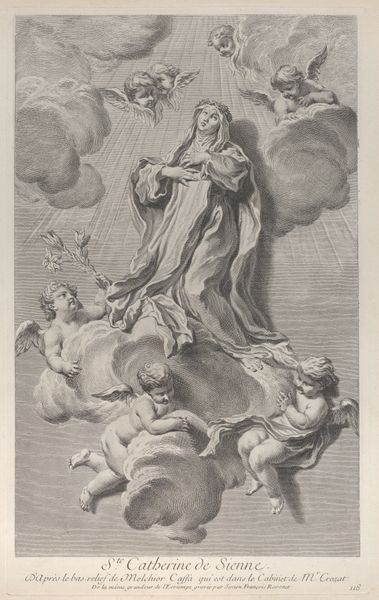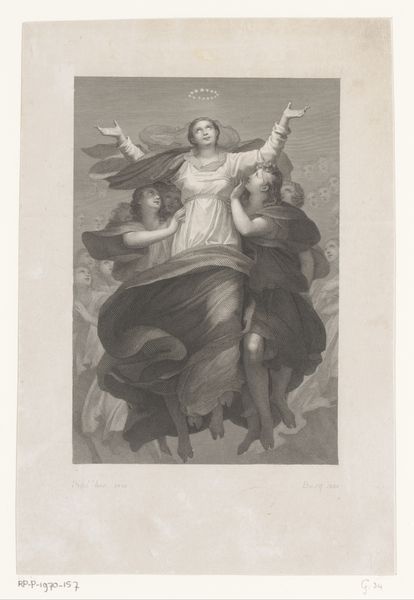
print, etching
#
allegory
# print
#
etching
#
figuration
#
history-painting
#
academic-art
Dimensions: 458 mm (height) x 323 mm (width) (bladmaal), 360 mm (height) x 285 mm (width) (plademaal)
Editor: Here we have Joel Ballin’s "Immaculée Conception," an etching from 1859. It has such a serene and ethereal quality to it, with the Virgin Mary floating amongst the clouds, surrounded by cherubic figures. What significance did imagery like this hold for the public at the time? Curator: Well, the "Immaculée Conception" as a subject became especially significant in the mid-19th century, culminating in its declaration as dogma by Pope Pius IX in 1854. Prints like this were instrumental in disseminating this imagery and solidifying its place in the popular religious imagination. It visually reinforced Catholic doctrine about Mary’s purity from birth. Editor: So, it was a form of visual propaganda, in a way? Curator: Exactly. Consider the historical context: 19th-century Europe was experiencing social upheaval and challenges to religious authority. The Church strategically employed art to reassert its influence and promote traditional values. Etchings like this, being relatively affordable, circulated widely among the faithful. How do you think the artist utilizes the medium of printmaking to convey his message? Editor: The delicate lines and shading in the etching enhance that ethereal feeling, making the figures almost glow. The black and white, I think, creates a timelessness, connecting the viewer to a long tradition. I now understand why such prints were everywhere. Curator: Precisely. And the Immaculate Conception, visualized and reproduced so widely, became a potent symbol of Catholic identity and resistance to secularizing forces. Editor: It’s fascinating how art intersects with religious and political power. I’ll definitely look at prints with new eyes now. Curator: Indeed. Considering art within its socio-political context really unlocks a deeper understanding of its meaning and impact.
Comments
No comments
Be the first to comment and join the conversation on the ultimate creative platform.
